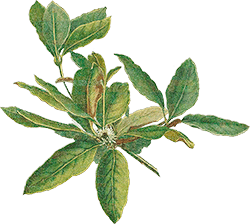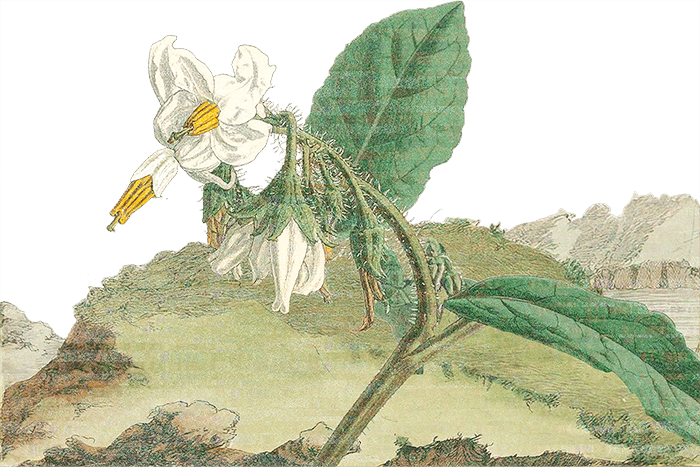On today’s show we learn about the Bermuda Cedar, a critically endangered evergreen conifer native to the island territory of Bermuda in the Atlantic Ocean, about 650 miles east of the North American coast.
Rough Transcript
Intro 00:05
Welcome to Bad at Goodbyes.
On today’s show we consider the Bermuda Cedar.
Species Information 02:05
The Bermuda Cedar is a critically endangered evergreen conifer native to the island territory of Bermuda in the Atlantic Ocean, about 650 miles east of the North American coast.
Description
The Bermuda Cedar is not, in fact a cedar, instead it is in the juniper family, its scientific name is juniperous bermudiana. It is a medium size tree that grows to heights of about 50 feet, though some exceptional individuals have been recorded reaching up to 75 feet tall.
Its trunk grows thick and straight, with thin brown outer bark that will peel in vertical strips revealing a white-ish, greyish inner bark, called the phloem. The Bermuda Cedar’s wood is durable, light, and resistant to rot and woodworms.
Due to environmental factors like wind and salt spray, the Bermuda Cedar will exhibit a great variety in its branching forms, some individuals have low growing branches a foot or two from the ground, others will not branch until much higher up and often the branches are gnarled and twisting.
Its foliage, its leaves, its needles remain evergreen throughout the year; they are flat, short, pressed close against the twig, giving a braided or scale-like appearance, a little like yarn, or the scales of a reptile. The Bermuda Cedar’s foliage looks, to me, a lot like the needles of a cedar tree, which likely explains its misrepresentative common name.
Its foliage is salt-tolerant, able to withstand the salt spray exposure in its coastal habitat. Relatedly, it grows long roots, anchoring deep in Bermuda’s chalky soil, an adaptation to provide stability against powerful ocean winds.
Reproduction
The Bermuda Cedar is dioecious, individual trees are either pollen-producing males or seed-producing females. They are conifers, their reproductive structures are cones. The male pollen-bearing cones are yellowish-brown skinny and cylindrical, and tiny, only about a 1/4 inch long. Their pollen is released in the springtime, and is dispersed by the wind.
As mentioned the Bermuda Cedar is in fact in the juniper family and thus its female reproductive structures are juniper berries which you may be familiar with from juniper species in your region or even from your kitchen or your local cocktail bar, juniper berries are often used in cooking and also to make gin, the alcohol spirit. But juniper berries are not actually berries, the juniper is a conifer, a gymnosperm. The “berry” is in fact a female seed cone. Unlike your stereotypical cone-shaped pine cone with hard dry separated woody scales, the scales of the juniper’s modified cone fuse together and remain fleshy, a soft round covering around the seeds.
Stereotypical woody conifer cone is adapted to: protect seeds and deter grazers; the juniper’s fleshy cones do the opposite: adapted to encourage animals to eat them. After consumption the seeds inside pass through the animal’s digestive system and are defecated, ideally at a distance from the parent plant, spreading the species.
In the case of the Bermuda Cedar, these cone/berries are round, deep blue or purple, about a quarter-inch in diameter and are consumed by birds, specifically the Common starling.
And then the seeds, if distributed into viable conditions, can take between 6 weeks and 6 months to germinate. The Bermuda Cedar is slow-growing; saplings can take about 10 years to reach reproductive maturity and individuals can live several hundred years. The oldest Bermuda Cedar is believed to be over 600 years old (pre-dating human arrival on Bermuda).
Habitat
The Bermuda Cedar is native to the archipelago of Bermuda, which is a British Overseas Territory in the North Atlantic Ocean. Bermuda is technically 181 islands, though only roughly 20 square miles of total landmass. The islands are limestone, formed from volcanic activity over 30 million years ago. The landscape is low-lying with rolling hills and elevations less than 250 feet above sea level, with coastlines of rocky cliffs, sandy beaches, and small coves. Inland is a variety of dense shrubland, forest, open woodland and scrubland.
The Bermuda Cedar is found throughout. It grows in shallow, chalky soils on hillsides, along coastlines, and in marshy areas.
This is the Bermuda subtropical conifer forest ecoregion. The climate is subtropical, warmed by the Gulf Stream, with mild conditions throughout the year. Summer high temperatures average in the low 80s°F. Winter lows rarely drop below 55°F. Annual rainfall is substantial, averaging approximately 65 inches per year, and distributed throughout the year; there is no distinct wet or dry season.
The Bermuda Cedar shares its island habitat with White-Tailed Tropicbird, Bermuda Petrel, Black Mangrove, Southern Hackberry, Snow Bunting, Red Mangrove, Hoary Bat, Maidenhair Fern, Bermuda Skink, Green Heron, Giant Land Crab, Buttonwood, Sandwich Tern, Jamaica Dogwood, Diamondback Terrapin, Bermuda Olivewood, Bermuda Sedge, Yellowood, Eastern Bluebird, Snowberry, Bermuda Palmetto, Bermuda Land Snail, Grey Catbird, and many many more.
In The Dream
————
In the dream,
To be the first human eyes upon an undiscovered place. To be the first human witness to millenia of undisturbed growth, evolution. To gaze that abundance, that verdancy, that mystery
Hundreds and hundreds of miles of ocean and then land, green lush land.
A living experiment of uninterrupted earthen becomings
And then in my dream, to hold that place in reverence. To not, for once, presume our planet’s wild offerings a thing to be exploited. To confront greed and reject it.
And then to leave, leave that place untouched, to continue its journey and I to continue mine, my only pillage: awe, a memory of eden.
In the dream
————
Threats
Historically the Bermuda Cedar has been threatened by human resource use and development, specifically logging. When the English first settled on Bermuda in 1612, it was a wholly wild place, unpeople and the landscape was covered in dense forests of Bermuda Cedar.
Some of these forests were first cleared for tobacco farming, then logged for timber. As mentioned, the Bermuda Cedar’s wood is strong and light, ideal for construction in general and specifically for shipbuilding. Bermuda developed into an English naval outpost and acclaimed shipyard.
But clearing of the Bermuda Cedar for shipbuilding was so concerning that in 1627, locals passed timber export laws in an effort to conserve their forests. In 1627!
And then between the late 1600s and the mid-1800s, the Bermuda legislature passed more than a dozen additional logging restrictions to protect the tree. Nevertheless, by the mid-1800s the shipbuilding industry had significantly deforested much of Bermuda’s landscape. These forests only recovered due to the development of iron-hulled steamships reducing demand for wooden ships and consequently reducing logging pressures.
Due to conservation-minded legislation and these shifts in shipbuilding technology, from the mid-1800s through the early 1900s Bermuda’s forests were reviving, recovering.
Then in the 1940s the US military began construction of Navy and Air Force bases on Bermuda and inadvertently introduced two species of coccoid scale insects: the oyster-shell scale and the juniper scale. Scale insects are rounded, tiny, less than a sixteenth of an inch in size, and feed on tree sap. The Bermuda Cedar had no evolutionary adapted defenses to these invasive insects. The result was catastrophic. Over the next 30 years the Bermuda Cedar population was decimated, reduced by 99%. An estimated 8 million trees were killed.
At the time, chemical control of the scale insects (like a sprayed pesticide) was considered but avoided due to safety concerns for the human population. Biological control was also attempted. The government intentionally introduced 8 different species of predatory ladybird beetle, in hopes they would prey upon and manage the juniper scale insect population. This proved unsuccessful.
In the end, it is simply evolution which prevailed. The remaining 1% of surviving Bermuda Cedar showed some resistance to the scale insects, and as a result of pressured rapid natural selection for this adaptation, most seedlings today seem to be partly or totally immune to scale insect attack.
But still, 8 million trees lost. In like 30 years.
I’m not sure I can even really conceive of like kind of transformation of a landscape, like that scale of rapid ecosystemic collapse. But we can mark it by noting that there are now less than 2000 Bermuda white-eyed vireo, a bird which nested in the Bermuda Cedar. And the Ochre-banded looper moth, which fed exclusively on the Bermuda Cedar, is now extinct.
And though the shortterm prognosis for the Bermuda Cedar is positive, it still faces additional contemporary threats. Non-native species introduced to reforest the island, like the Australian Pine are competing with Bermuda Cedar for resources, in particular the Australian Pine creates an untenable amount of shade for the Cedar’s saplings.
Continued human development and habitat encroachment threatens the Bermuda Cedar. About 20% of Bermuda’s land area is now paved, a trend expected to continue, reducing the available land for natural regeneration and reforestation efforts.
Human induced climate change poses an increasing threat. Increasing global temperatures resulting in sea level rise impacts the root systems of some low-lying cedars; immersion in seawater eventually leads to mortality.
Conservation
Fortunately much of the remaining population of the Bermuda Cedar grows in protected areas across 12 nature reserves and 63 parks on the islands. Significant reforestation efforts began in the 1980s and continue today, focusing on propagating and replanting insect-resistant trees across its habitat. And the tree has had various forms of governmental legal protection for nearly 400 years.
Nevertheless the Bermuda Cedar has been considered critically endangered on the IUCN Red List since 1998.
Our most recent counts estimate that less than 25,000 Bermuda Cedar remain in the wild.
Citations 27:50
Information for today’s show about the Bermuda Cedar was compiled from:
Bermuda Department of Environment and Natural Resources. “Bermuda Cedar (Juniperus bermudiana)” – https://environment.bm/bermuda-cedar
“Biodiversity: the UK Overseas Territories”. Procter, D., & Fleming, L.V., eds. 1999.Peterborough, Joint Nature Conservation Committee. – https://www.nonnativespecies.org/assets/Document-repository/Procter_D_Fleming_L_Eds_1999_Biodiversity_the_UK_Overseas_Territories.pdf
Centre for Agriculture and Bioscience International. Rojas-Sandoval, Julissa, cabicompendium.29072, CABI Compendium, CABI International 2022), “Juniperus bermudiana (bermuda cedar)” – https://doi.org/10.1079/cabicompendium.29072
“Junipers of the World: The Genus Juniperus”. Adams, Robert P.. United States: Trafford Publishing Company, 2014. – http://www.juniperus.org
The IUCN Red List of Threatened Species 2011: e.T30376A9532928. Wingate, D.B., Adams, R & Gardner, M. 2011. “Juniperus bermudiana”. – https://dx.doi.org/10.2305/IUCN.UK.2011-2.RLTS.T30376A9532928.en
Lundellia, v.21 no.1, 1-34, (25 February 2019). Robert P. Adams. “Juniperus of Canada and the United States: Taxonomy, Key and Distribution,” – https://doi.org/10.25224/1097-993X-21.1
One Earth’s Bioregion Framework. Noss, Reed. “Bermuda Subtropical Conifer Forests” – https://www.oneearth.org/ecoregions/bermuda-subtropical-conifer-forests/
Phytologia 90 (2): 123—133. Adams, Robert P., and David B. Wingate. 2008. “Hybridization between Juniperus Bermudiana and J. Virginiana in Bermuda.” – https://www.biodiversitylibrary.org/part/220331
Phytologia 90 (2): 134—136. Adams, Robert P. 2008. “Juniperus Bermudiana; A Species in Crisis, Should It Be Rescued from Introduced Junipers?” – https://www.biodiversitylibrary.org/part/220332
Trees and Shrubs Online. International Dendrology Society. John Grimshaw; Ross Bayton. “Juniperus bermudiana” – https://treesandshrubsonline.org/articles/juniperus/juniperus-bermudiana/
Tropical Plants Database, Ken Fern. “Juniperus bermudiana”. – https://tropical.theferns.info/viewtropical.php?id=Juniperus+bermudiana
Wikipedia – https://en.wikipedia.org/wiki/Juniperus_bermudiana
Music 29:34
Pledge 38:38
I honor the lifeforce of the Bermuda Cedar. I will commit its name to my record. I am grateful to have shared time on our planet with this being. I lament the ways in which I and my species have harmed and diminished this species. I grieve.
And so, in the name of the Bermuda Cedar I pledge to reduce my consumption. And my carbon footprint. And curb my wastefulness. I pledge to acknowledge and attempt to address the costs of my actions and inactions. And I pledge to resist the harm of plant and animal kin and their habitat, by individuals, corporations, and governments.
I forever pledge my song to the witness and memory of all life, to a broad celebration of biodiversity, and to the total liberation of all beings.

